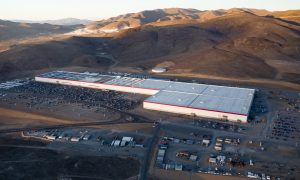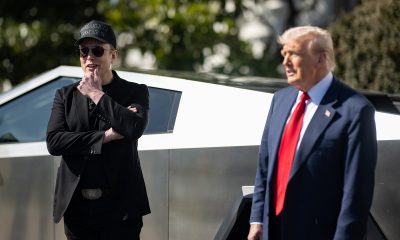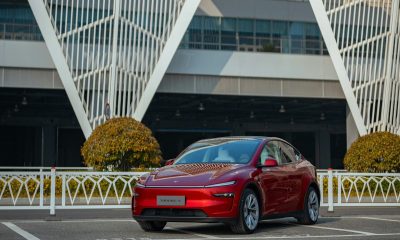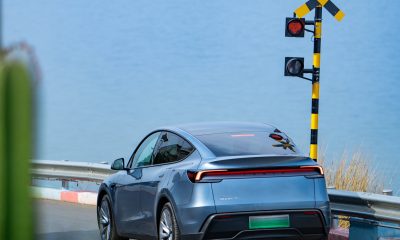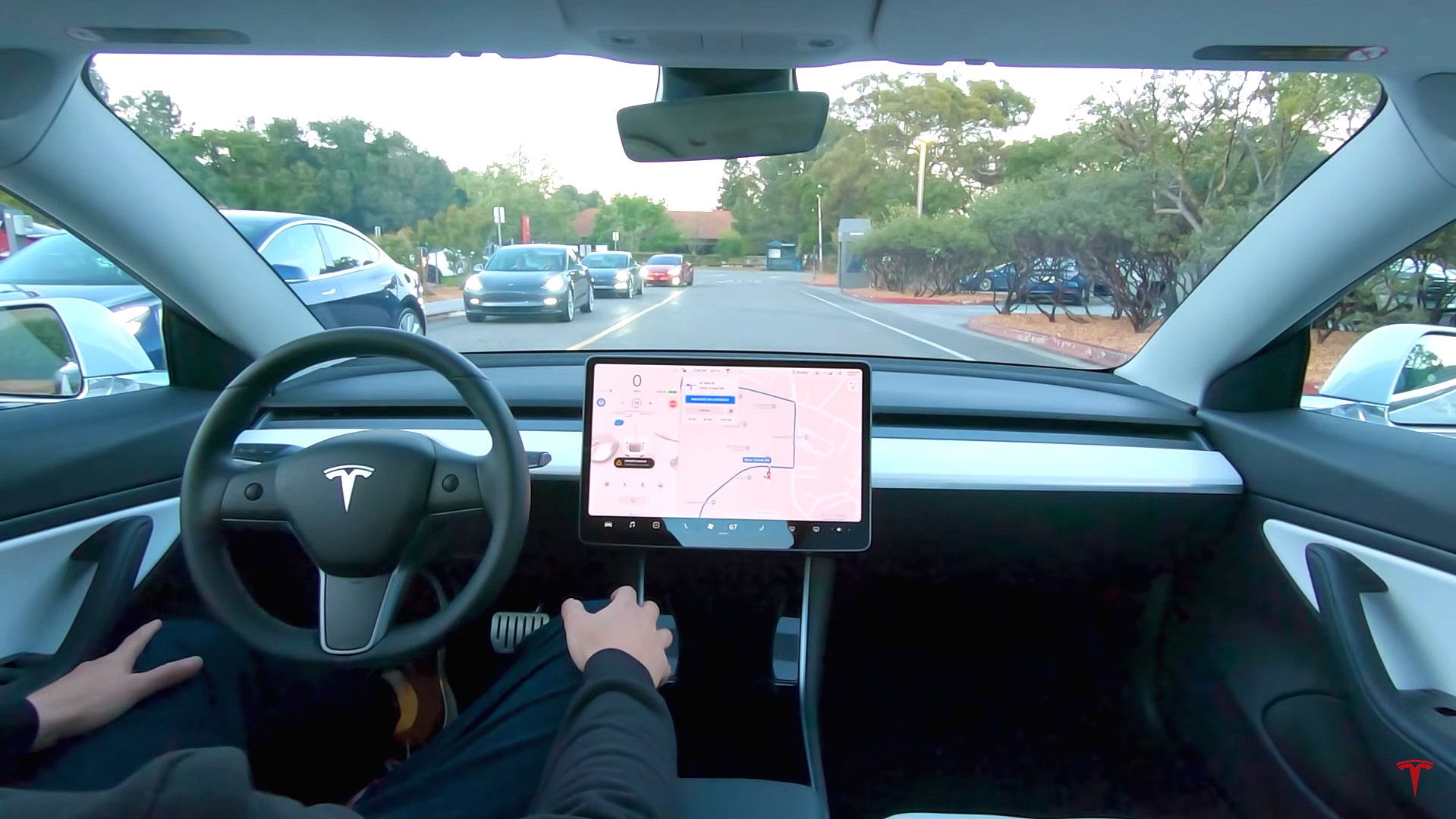

News
Self-driving cars move forward. Can we say the same for epileptic driving rights?
The future of autonomous vehicles is almost a certainty, but for people with seizures and epilepsy who are dependent and reliant on having transportation for their day-to-day activities, it is anything but. The self-driving cars of the future could offer independence and freedom for those who are not legally able to obtain a driver’s license due to their medical conditions. However, as the autonomous vehicles of the future approach with every passing day, it seems that the states and laws that surround epilepsy and driving may need re-examining, especially as companies like Tesla move toward a future involving self-driving cars.
Laws regarding epilepsy and driver’s licenses vary from state to state. However, what may be more striking than the fact that those who suffer from seizures are rarely granted driving privileges is the fact that many states have not started to prepare for a future with them on the road as passengers. The simple fact is that companies are moving closer and closer to solving autonomy every single day. Legislation has not moved forward at the pace of autonomy, which begs the question: What if self-driving cars come before those with epilepsy have the right to operate them?
According to the California Department of Motor Vehicles, what lies ahead for autonomy really depends on the companies that handle the issue. For companies like Tesla, the goal is obvious: create a car that can take away the hassle of driving and make things safer for more people. However, some of the companies involved in the fight for autonomous vehicles may not realize the act of service they are doing for those who have not had the opportunity to drive or operate a motor vehicle due to a neurological condition.
David Dobrik’s Tesla launch does not define his love for the company
The California DMV told Teslarati that it allows those with epilepsy or conditions involving seizures to be evaluated by the State to ensure they remain safe behind the wheel. “If you lose consciousness for a short period of time, you can also lose control of your vehicle, which can result in serious accidents or death,” the California DMV writes on its website. Those who are interested in obtaining a driver’s license will undergo an evaluation, which uses the “Lapse of Consciousness Consolidation Table” as a benchmark to determine whether a person seems capable of driving a vehicle.
Obviously, whether the person receives driving privileges or not is completely dependent on the symptoms, severity, and causes of their condition. The chart is extensive and uses ten pages of tables to evaluate a potential driver, leaving no room for personal interpretation or grey areas. Additionally, provisionally available license grants are possible depending on a lapse of time in between episodes. However, it requires full medical transparency from the driver, including regular check-ins that are technically written and law-abiding statements. Falsifying the status of one’s condition can ultimately result in the suspension and possible revocation of a driver’s license.
While all of these details provide some color to the potential rights of those who would be interested in obtaining the privilege to drive a vehicle, there is still a major miscommunication on the potential of what self-driving cars could do for people who are not eligible for a license. Additionally, it could benefit some drivers who may be fit to drive but are uncomfortable with disclosing medical information with relation to the HIPAA act. When Level 5 autonomy is reached by a company, laws and legislation will have to be written or revised to include those who would like to have their vehicle drive them to a destination. Unfortunately, while companies chip away and move closer to this goal, the lack of knowledge on the part of DMVs at the current time was shocking. Relatively no detail was given by the California DMV, where Tesla was located until late September. Meanwhile, Waymo and Pony.ai still call California home in Mountain View and Fremont, respectively.
While the evaluation process is clear and concise, it only takes into account the instances where those with epilepsy would be able to drive a car, and not in the instance that a car drives itself. Essentially, the preparedness of government agencies to cater to those with disorders could result in even more time wasted for those who are affected.
The status of the self-driving industry is also moving forward at a tremendous rate. Tesla is expanding its Full Self-Driving Beta program and is focusing on gathering more data with the help of its Beta fleet to make its neural network more robust. Waymo is launching somewhat successful moves toward autonomous driving, and Pony.ai is launching Robotaxis in Beijing.
Waymo’s self-driving cars invade San Francisco street in most bizarre way possible
States need to begin working toward clarifying the situation between self-driving cars and the epileptic. There is too much room for interpretation currently, and the issue is much more serious than just “hitching a ride.” The revolutionary change that has already started occurring with electric cars will see something extremely similar with self-driving vehicles: a lack of understanding and infrastructure that could potentially delay progression and derail advancement in the way people with neurological disorders get from place to place.
Don’t hesitate to contact us with tips! Email us at tips@teslarati.com, or you can email me directly at joey@teslarati.com.
Elon Musk
Tesla reveals it is using AI to make factories more sustainable: here’s how
Tesla is using AI in its Gigafactory Nevada factory to improve HVAC efficiency.
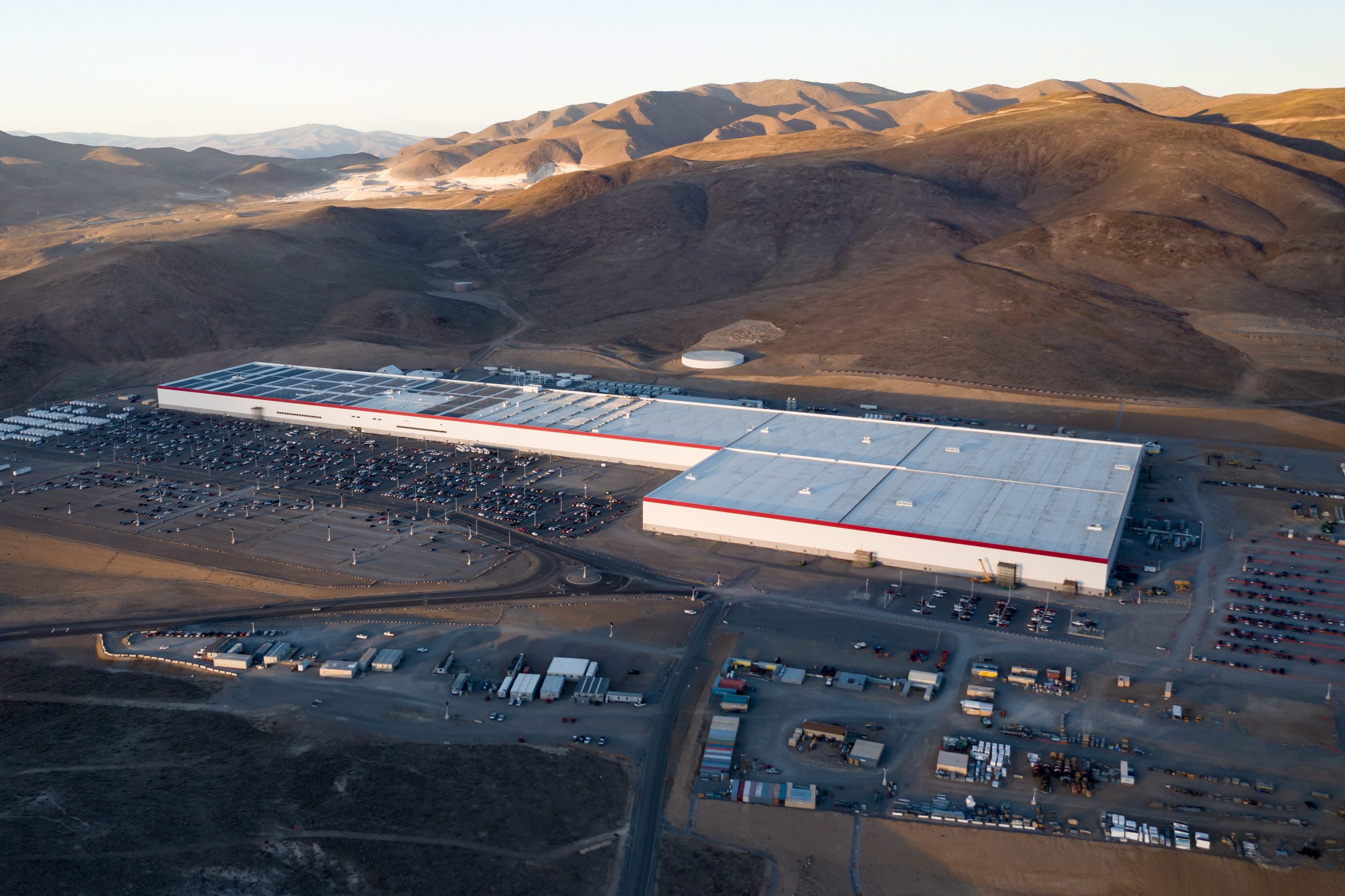
Tesla has revealed in its Extended Impact Report for 2024 that it is using Artificial Intelligence (AI) to enable its factories to be more sustainable. One example it used was its achievement of managing “the majority of the HVAC infrastructure at Gigafactory Nevada is now AI-controlled” last year.
In a commitment to becoming more efficient and making its production as eco-friendly as possible, Tesla has been working for years to find solutions to reduce energy consumption in its factories.
For example, in 2023, Tesla implemented optimization controls in the plastics and paint shops located at Gigafactory Texas, which increased the efficiency of natural gas consumption. Tesla plans to phase out natural gas use across its factories eventually, but for now, it prioritizes work to reduce emissions from that energy source specifically.
It also uses Hygrometric Control Logic for Air Handling Units at Giafactory Berlin, resulting in 17,000 MWh in energy savings each year. At Gigafactory Nevada, Tesla saves 9.5 GWh of energy through the use of N-Methylpyrrolidone refineries when extracting critical raw material.
Perhaps the most interesting way Tesla is conserving energy is through the use of AI at Gigafactory Nevada, as it describes its use of AI to reduce energy demand:
“In 2023, AI Control for HVAC was expanded from Nevada and Texas to now include our Berlin-Brandenburg and Fremont factories. AI Control policy enables HVAC systems within each factory to work together to process sensor data, model factory dynamics, and apply control actions that safely minimize the energy required to support production. In 2024, this system achieved two milestones: the majority of HVAC infrastructure at Gigafactory Nevada is now AI-controlled, reducing fan and thermal energy demand; and the AI algorithm was extended to manage entire chiller plants, creating a closed-loop control system that optimizes both chilled water consumption and the energy required for its generation, all while maintaining factory conditions.”
Tesla utilizes AI Control “primarily on systems that heat or cool critical factory production spaces and equipment.” AI Control communicates with the preexisting standard control logic of each system, and any issues can be resolved by quickly reverting back to standard control. There were none in 2024.
Tesla says that it is utilizing AI to drive impact at its factories, and it has proven to be a valuable tool in reducing energy consumption at one of its facilities.
Elon Musk
Tesla analysts believe Musk and Trump feud will pass
Tesla CEO Elon Musk and U.S. President Donald Trump’s feud shall pass, several bulls say.

Tesla analysts are breaking down the current feud between CEO Elon Musk and U.S. President Donald Trump, as the two continue to disagree on the “Big Beautiful Bill” and its impact on the country’s national debt.
Musk, who headed the Department of Government Efficiency (DOGE) under the Trump Administration, left his post in May. Soon thereafter, he and President Trump entered a very public and verbal disagreement, where things turned sour. They reconciled to an extent, and things seemed to be in the past.
However, the second disagreement between the two started on Monday, as Musk continued to push back on the “Big Beautiful Bill” that the Trump administration is attempting to sign into law. It would, by Musk’s estimation, increase spending and reverse the work DOGE did to trim the deficit.
Every member of Congress who campaigned on reducing government spending and then immediately voted for the biggest debt increase in history should hang their head in shame!
And they will lose their primary next year if it is the last thing I do on this Earth.
— Elon Musk (@elonmusk) June 30, 2025
President Trump has hinted that DOGE could be “the monster” that “eats Elon,” threatening to end the subsidies that SpaceX and Tesla receive. Musk has not been opposed to ending government subsidies for companies, including his own, as long as they are all abolished.
How Tesla could benefit from the ‘Big Beautiful Bill’ that axes EV subsidies
Despite this contentious back-and-forth between the two, analysts are sharing their opinions now, and a few of the more bullish Tesla observers are convinced that this feud will pass, Trump and Musk will resolve their differences as they have before, and things will return to normal.
ARK Invest’s Cathie Wood said this morning that the feud between Musk and Trump is another example of “this too shall pass:”
BREAKING: CATHIE WOOD SAYS — ELON AND TRUMP FEUD “WILL PASS” 👀 $TSLA
She remains bullish ! pic.twitter.com/w5rW2gfCkx
— TheSonOfWalkley (@TheSonOfWalkley) July 1, 2025
Additionally, Wedbush’s Dan Ives, in a note to investors this morning, said that the situation “will settle:”
“We believe this situation will settle and at the end of the day Musk needs Trump and Trump needs Musk given the AI Arms Race going on between the US and China. The jabs between Musk and Trump will continue as the Budget rolls through Congress but Tesla investors want Musk to focus on driving Tesla and stop this political angle…which has turned into a life of its own in a roller coaster ride since the November elections.”
Tesla shares are down about 5 percent at 3:10 p.m. on the East Coast.
Elon Musk
Tesla scrambles after Musk sidekick exit, CEO takes over sales
Tesla CEO Elon Musk is reportedly overseeing sales in North America and Europe, Bloomberg reports.

Tesla scrambled its executives around following the exit of CEO Elon Musk’s sidekick last week, Omead Afshar. Afshar was relieved of his duties as Head of Sales for both North America and Europe.
Bloomberg is reporting that Musk is now overseeing both regions for sales, according to sources familiar with the matter. Afshar left the company last week, likely due to slow sales in both markets, ending a seven-year term with the electric automaker.
Tesla’s Omead Afshar, known as Elon Musk’s right-hand man, leaves company: reports
Afshar was promoted to the role late last year as Musk was becoming more involved in the road to the White House with President Donald Trump.
Afshar, whose LinkedIn account stated he was working within the “Office of the CEO,” was known as Musk’s right-hand man for years.
Additionally, Tom Zhu, currently the Senior Vice President of Automotive at Tesla, will oversee sales in Asia, according to the report.
It is a scramble by Tesla to get the company’s proven executives over the pain points the automaker has found halfway through the year. Sales are looking to be close to the 1.8 million vehicles the company delivered in both of the past two years.
Tesla is pivoting to pay more attention to the struggling automotive sales that it has felt over the past six months. Although it is still performing well and is the best-selling EV maker by a long way, it is struggling to find growth despite redesigning its vehicles and launching new tech and improvements within them.
The company is also looking to focus more on its deployment of autonomous tech, especially as it recently launched its Robotaxi platform in Austin just over a week ago.
However, while this is the long-term catalyst for Tesla, sales still need some work, and it appears the company’s strategy is to put its biggest guns on its biggest problems.
-

 Elon Musk1 day ago
Elon Musk1 day agoTesla investors will be shocked by Jim Cramer’s latest assessment
-

 News6 days ago
News6 days agoTesla Robotaxi’s biggest challenge seems to be this one thing
-

 News2 weeks ago
News2 weeks agoTesla’s Grok integration will be more realistic with this cool feature
-

 Elon Musk2 weeks ago
Elon Musk2 weeks agoElon Musk slams Bloomberg’s shocking xAI cash burn claims
-
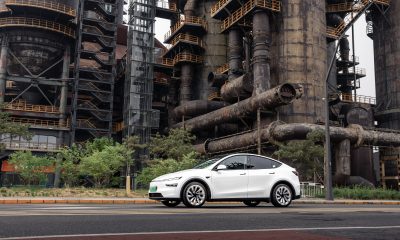
 News2 weeks ago
News2 weeks agoTesla China roars back with highest vehicle registrations this Q2 so far
-

 News2 weeks ago
News2 weeks agoTexas lawmakers urge Tesla to delay Austin robotaxi launch to September
-

 News2 weeks ago
News2 weeks agoTesla dominates Cars.com’s Made in America Index with clean sweep
-

 Elon Musk1 week ago
Elon Musk1 week agoFirst Look at Tesla’s Robotaxi App: features, design, and more


